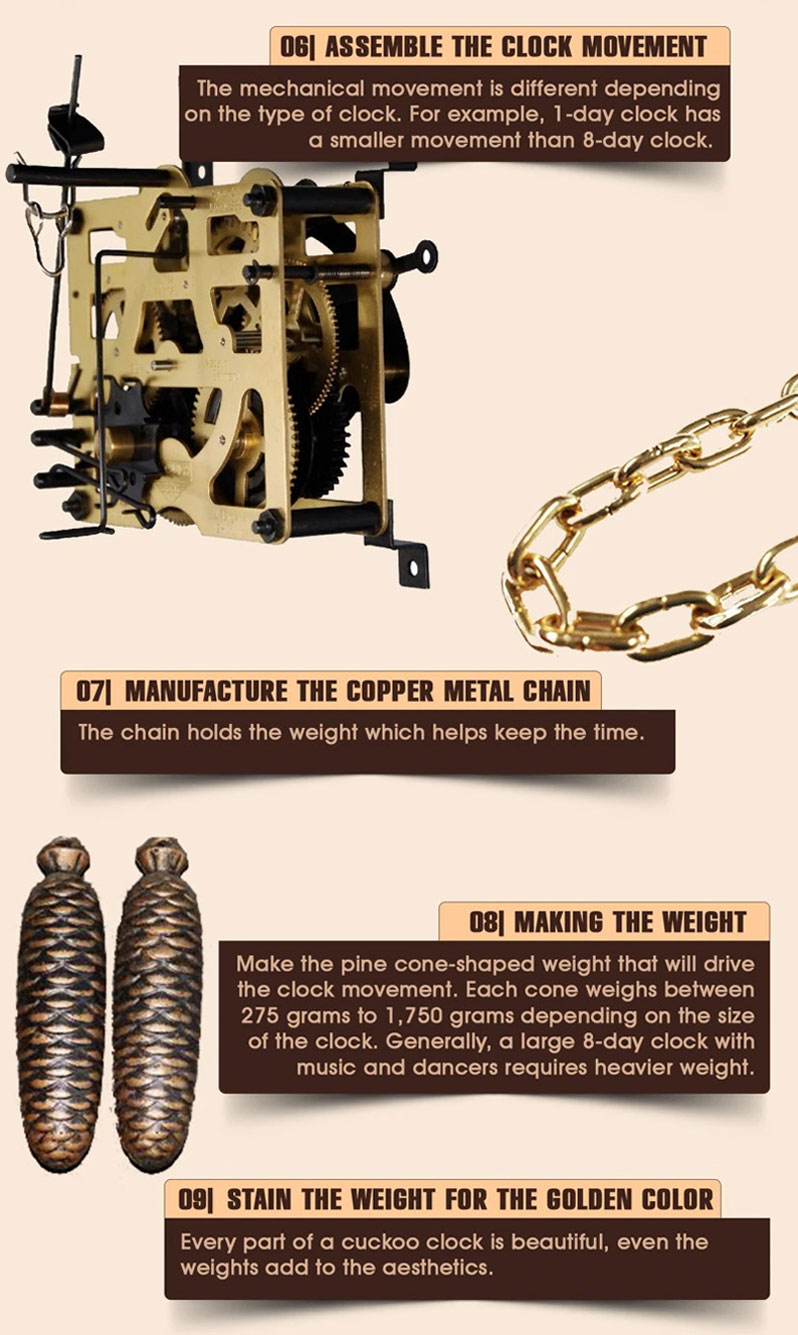How Cuckoo Clocks Are Made?
16 Steps in Making An Exquisite German Cuckoo Clock
The sky is the limit when choosing the design. The style, scenery, and moving parts must all be considered. There are the five types of cuckoo clocks.
Linden wood is the traditional choice and is hand selected by the clock master.
Depending on the design, this could include dozens or even hundreds of elements. From the axe for a woodsman to the dancers who will eventually twirl upon the hour. The figurines are traditional to the Black Forest Germany.
Everything is handmade, even the clock hands!
The hand-painted details will bring the carved scene to life! Do you know that linden wood is perfect for caving a coo coo clock?
The mechanical movement is different depending on the type of clock. For example, a 1-day clock has a smaller movement than an 8-day clock.
The chain helps keep the time and is also added by hand.
Each cone weighs between 275 grams to 1,750 grams depending on the size of the clock. Generally, a large 8-day clock with music and dancers requires heavier weight.
Every part of a cuckoo clock is beautiful, even the weights add to the aesthetics.
The music box is usually the only clock element not made in the Black Forest, they are manufactured in Switzerland. The common tunes are Edelweiss and Der Froehliche Wanderer (“The Happy Wanderer”).
There are two types of tones for a music box: 22 tones and 36 tones. The more tones a music box has, the smoother the music will sound. Therefore, music box with higher tones generally costs more.
The ‘coo coo’ sound comes from two wooden pipes connected to two cloth bellows. The iconic “coo coo” is created by squeezing the air in and out of the bellows. This article explains in detail how the ‘coo coo’ sound is made.
Accompanying the “coo coo” will be a gong sound, on the hour. The ‘gong’ is created by striking a hammer activated by the mechanical movement on a piece of spiral metal mounted on the backboard.
A clock’s pendulum crafted from wood. The pendulum has a vital role to running a clock, it regulates the clock’s running speed.
This is the most challenging step because it takes a lot of experience and skills to assemble the inner mechanical movements together. There are many pieces of metal wires that go inside of a clock.
A newly assembled clock is normally set and test for at least 3 days to make sure the movement runs without any problem. Then this newly made cuckoo clock will be ready for its new home. The cuckoo clock is very complex. In case you need to troubleshoot your coo coo clock, you can find clock troubleshooting tips here:
https://cuckooforest.com/pages/maintaining-your-clocks
Make sure you read the Cuckoo Clock Buying Guide before purchasing your first clock.












